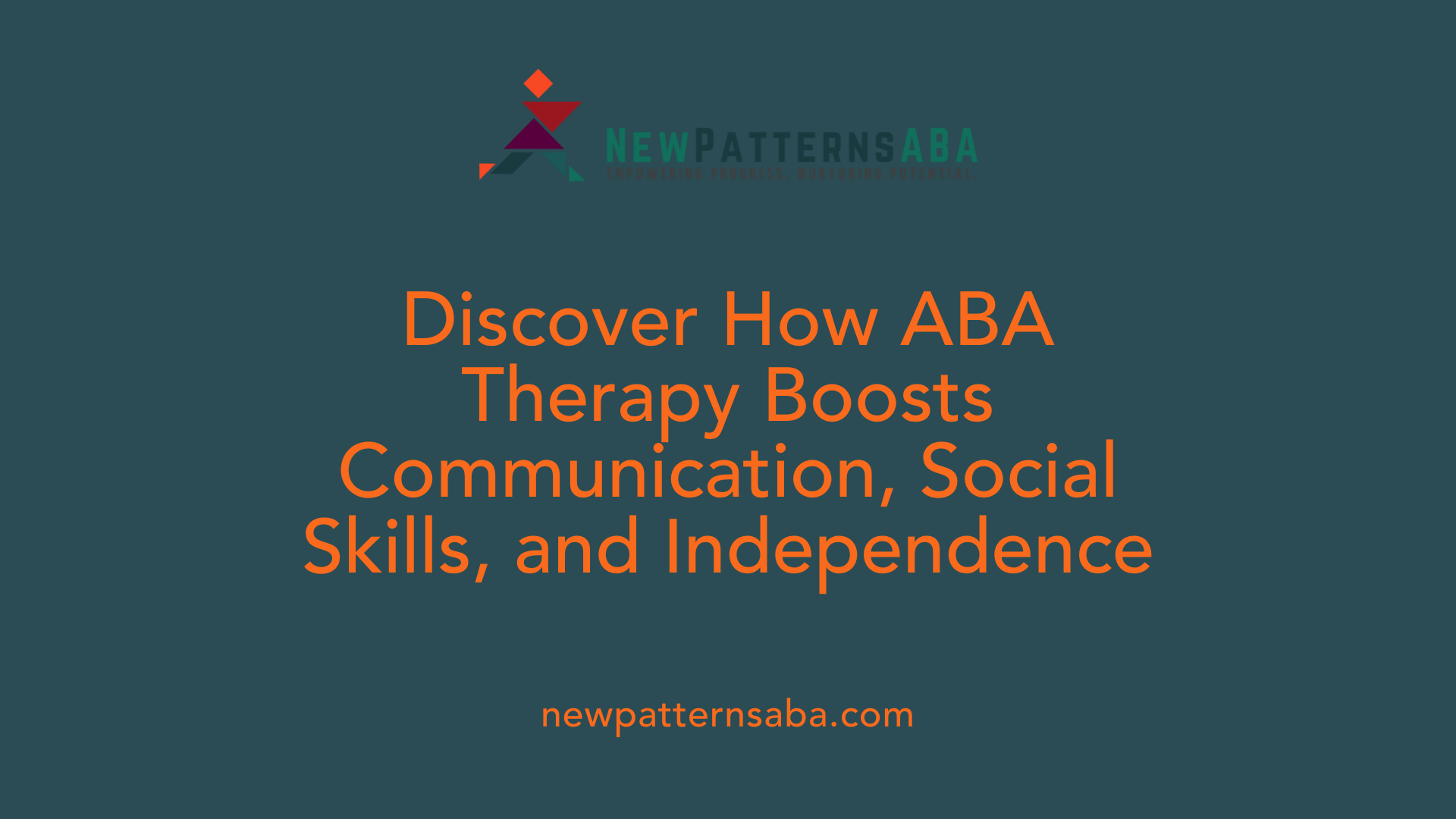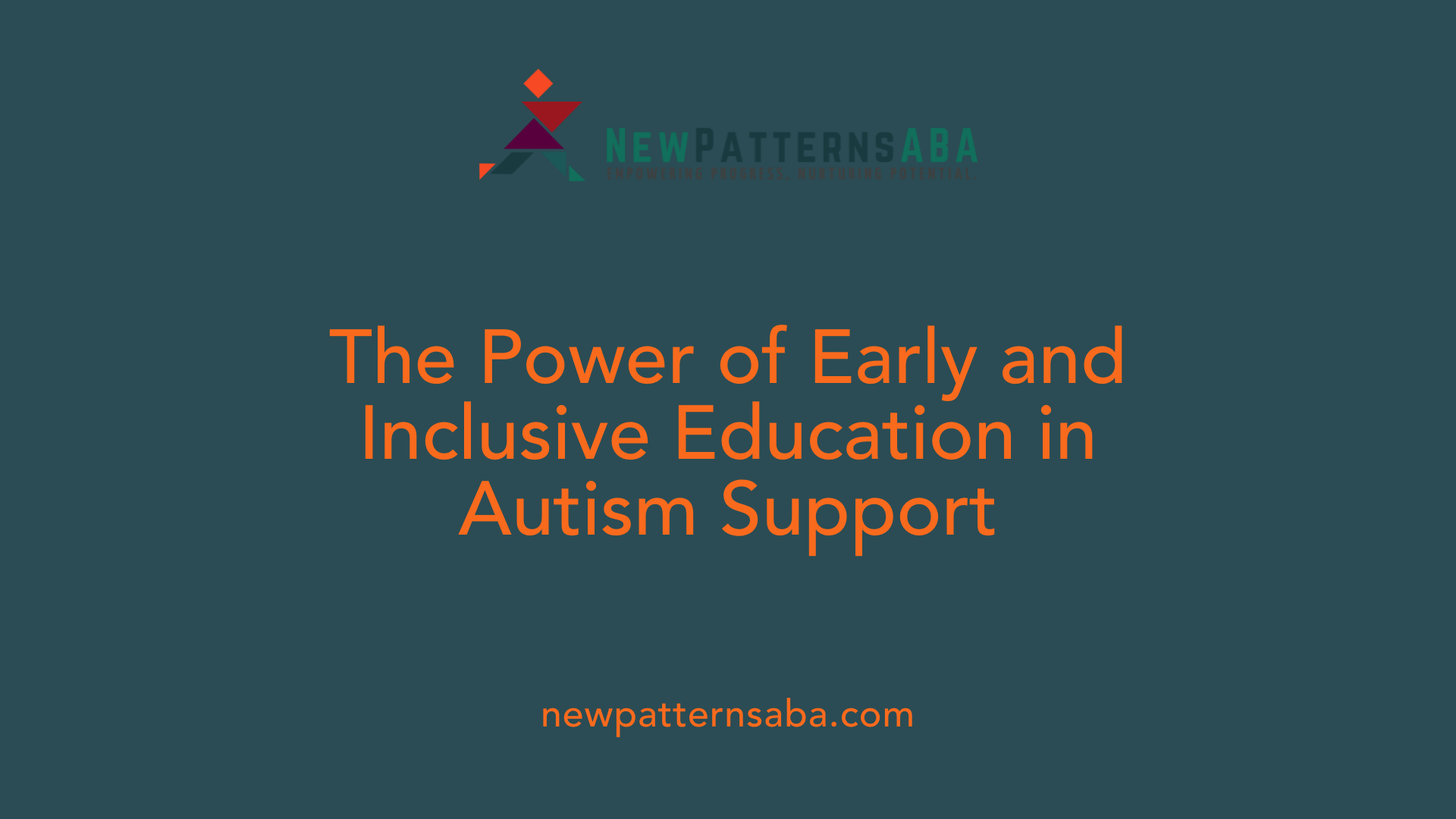The Crucial Role of Educators and Early Intervention
Early childhood educators stand at the forefront of supporting children with autism spectrum disorder (ASD). Through early diagnosis and the integration of evidence-based therapies such as Applied Behavior Analysis (ABA), they play an essential role in nurturing social, communication, and behavioral skills development. This article explores how educators, alongside clinical specialists, contribute to effective autism intervention and facilitate meaningful developmental outcomes during the earliest stages of childhood.
Understanding Applied Behavior Analysis (ABA) Therapy
What is Applied Behavior Analysis (ABA) therapy?
Applied Behavior Analysis (ABA) therapy is an evidence-based treatment rooted in learning and behavior science. It primarily supports individuals with autism in developing essential skills such as communication, social interaction, and self-care, while reducing challenging behaviors. ABA focuses on the A-B-Cs of behavior — antecedents, behaviors, and consequences — to encourage positive actions through techniques like positive reinforcement.
Which types of ABA methodologies are commonly used?
- Discrete Trial Training (DTT): Intensive one-on-one sessions breaking skills into small steps, with clear instructions and reinforcement.
- Pivotal Response Treatment (PRT): A play-based approach targeting pivotal behaviors like motivation and initiation of communication to broadly improve developmental areas.
- Early Start Denver Model (ESDM): Designed for young children aged 1 to 4, this model combines behavioral and developmental strategies to boost social, emotional, and cognitive growth.
Where can ABA therapy be implemented?
ABA is highly flexible and can be delivered in various settings such as homes, clinics, schools, and community environments. Therapists often work directly with the child one-on-one, while also coaching parents and caregivers to continue practices in daily routines for consistency.
What scientific evidence supports ABA?
Extensive research has demonstrated ABA’s effectiveness in improving language, social skills, and behavior for children with autism. Intensive and structured ABA programs, especially when started early, yield significant developmental benefits. The therapy’s personalized nature ensures goals align with each child’s abilities and needs, making it a cornerstone of early autism intervention.
Key Techniques Used in ABA Therapy to Support Learning

What techniques are commonly used in ABA therapy?
Applied Behavior Analysis (ABA) therapy incorporates several targeted techniques to promote learning and behavioral improvements in children with autism. One fundamental strategy is positive reinforcement, where desirable behaviors are rewarded to encourage their repetition. This approach is often combined with prompting, where clear instructions and cues support the child's responses, gradually reducing assistance as the child gains independence.
Another core method is Discrete Trial Training (DTT), involving short, structured teaching sessions that break down complex skills into smaller, manageable tasks. This technique allows focused learning through repetition and immediate feedback.
ABA also employs task analysis and behavior chaining by dividing intricate behaviors into sequential steps. Children learn each step progressively, enabling them to complete complex activities independently over time.
Video modeling is frequently used as a visual learning tool, where children watch demonstrations of desired behaviors in videos, helping them imitate and learn social skills more effectively.
Natural environment teaching involves embedding learning opportunities within everyday settings like home or community routines. This contextualized instruction supports generalization of skills to real-life situations.
Behind all these methods is consistent data collection and analysis, which guides therapists in tailoring the intervention, tracking progress, and adapting goals. Precise data helps ensure each child's program remains responsive to their evolving needs and developmental stage.
These combined techniques enable ABA therapy to systematically promote communication, social interaction, self-care, and behavioral management, fostering meaningful skill development in children with autism.
Benefits of ABA Therapy for Children with Autism

How does ABA therapy benefit individuals with autism?
ABA therapy offers numerous advantages by using science-based approaches to foster desirable behaviors and diminish problematic ones. Trained specialists devise personalized plans that focus on key developmental areas.
Enhancements in communication and social interaction
ABA therapy breaks down communication skills into small, achievable tasks, teaching children how to speak, use sign language, or operate communication devices. Social skills growth is encouraged through role-playing, cooperative play, and learning to understand social cues like emotions and body language.
Development of self-care and academic skills
By simplifying complex activities into short steps, ABA empowers children to master self-care routines and early academic skills. Positive reinforcement motivates children, promoting continual progress in daily living and educational participation.
Behavior management and reduction of challenges
ABA emphasizes positive reinforcement to increase constructive behaviors while reducing triggers for negative behaviors. Therapists teach coping strategies and self-management to help children handle emotional regulation effectively.
Promoting independence and emotional regulation
Gradual fading of prompts encourages children to complete tasks autonomously, fostering confidence and independence. Emotional regulation is supported with techniques like emotion labeling and coping skills to help manage feelings.
Improvement in quality of life and long-term outcomes
The comprehensive impact of ABA therapy leads to better communication, improved social relationships, and diminished behavioral difficulties. These benefits contribute significantly to a higher quality of life, allowing children to engage socially and build friendships.
| Benefit Area | Key Features | How It Helps Children |
|---|---|---|
| Communication & Social Skills | Role-play, social cues training, structured lessons | Enhances expression, interaction, and understanding |
| Self-Care & Academic Development | Task breakdown, positive reinforcement, natural environment teaching | Boosts independence and school readiness |
| Behavior Management | Positive reinforcement, emotion regulation, removal of triggers | Reduces challenges and improves emotional control |
| Independence & Emotional Control | Gradual fading of prompts, coping strategies | Increases self-confidence and ability to handle emotions |
| Overall Quality of Life | Skill generalization, family involvement, comprehensive support | Promotes social inclusion and long-term successful outcomes |
Who Provides ABA Therapy and Their Collaborative Role with Educators

Roles of BCBAs, therapists, and assistants
ABA therapy is delivered by a specialized team guided by Board-Certified Behavior Analysts (BCBAs) who design and oversee individualized treatment plans. Registered Behavior Technicians (RBTs), therapists, and assistants provide hands-on therapy, implementing ABA strategies during sessions. Each professional focuses on helping children develop communication, social, and behavioral skills tailored to their developmental needs.
Settings for ABA service delivery
ABA services are flexible and offered in various settings, including in-home programs, specialized clinics, and community-based environments. This multi-setting approach helps generalize skills across everyday contexts, maximizing learning and promoting independence.
Collaboration with parents and educators
A central element of effective ABA therapy is collaboration with parents and early childhood educators. Specialists actively train caregivers and educators to reinforce therapy principles, creating consistent learning opportunities across home and educational settings. This partnership ensures the child receives cohesive support, which accelerates skill development.
Importance of family involvement and training
Family participation is critical in ABA therapy. Clinicians empower parents and caregivers with knowledge and tools to continue interventions outside of formal sessions. This ongoing involvement strengthens skill retention and fosters a supportive, nurturing environment essential for positive behavior change.
Insurance coverage and accessibility of services
Many ABA providers accept a broad range of insurance plans, including Medicaid and private insurers, facilitating access to therapy for diverse families. These coverage options alleviate financial barriers, enabling earlier and more consistent intervention that significantly improves outcomes.
| Provider Role | Primary Function | Collaboration Aspect |
|---|---|---|
| Board-Certified Behavior Analyst (BCBA) | Develops and supervises treatment plans | Coordinates with family and educators |
| Registered Behavior Technician (RBT) | Implements therapy sessions | Partners in coaching caregivers |
| Therapists and Assistants | Direct skill-building and behavior management | Support generalization across settings |
By working closely together, ABA therapists and educators ensure children with autism spectrum disorder receive comprehensive, continuous support that promotes meaningful developmental progress.
The Role of Early Childhood Educators in Autism Intervention
Early Educators as Frontline Identifiers of Developmental Concerns
Early childhood educators often serve as the first to observe signs of autism spectrum disorder (ASD) in children. By recognizing early developmental differences in communication, social interaction, or behavior, they play a vital role in prompting early assessment and intervention. Awareness of the early signs aids in timely referrals to specialists.
Implementing Structured Education and Behavioral Strategies
Educators implement intensive and structured learning environments that support children with autism in developing vital skills. Methods such as Applied Behavior Analysis (ABA) can be adapted in classroom settings, focusing on clear instructions, positive reinforcement, and breaking down tasks into manageable steps. Educators use these strategies to encourage desired behaviors and reduce challenges.
Supporting Language, Social, and Behavioral Skill Development
Through activities like role-playing, turn-taking games, and social stories, educators help children expand their communication and social skills. Structured play and naturalistic teaching offer opportunities to practice greetings, eye contact, initiating conversations, and interpreting social cues. These targeted efforts build foundational skills and foster friendships.
Facilitating Inclusive Classroom Environments
Creating inclusive classrooms requires educators to adapt learning experiences that meet diverse needs. They apply individualized interventions, such as peer-mediated strategies, to promote engagement and active participation of children with ASD alongside their peers. This promotes social integration and enriches the learning environment for all children.
Collaboration with Multidisciplinary Teams and Families
Early educators collaborate closely with psychologists, speech and language therapists, occupational therapists, and families to ensure consistency and maximize intervention effectiveness. Training parents and caregivers in behavioral principles enables reinforcement of learning at home. Such teamwork leads to more cohesive and supportive development plans tailored to each child's needs.
Importance of Early Intervention and Inclusive Educational Settings

What are the benefits of starting intervention before age three?
Starting intervention before age three can significantly boost a child's developmental progress. Early support leads to improved communication skills, stronger social interactions, and reduced behavioral challenges. Interventions begun at this stage harness the brain's plasticity, enabling children with autism to develop essential skills more effectively than starting later.
What multidisciplinary approaches are used in early intervention?
Early intervention employs a team approach involving psychologists, speech and language therapists, occupational and physical therapists, and behavioral clinicians. This multidisciplinary strategy addresses each child's unique needs through therapies like speech therapy, occupational therapy, and behavioral methods such as Applied Behavior Analysis (ABA). The use of positive reinforcement techniques and skill-building ensures tailored goals aligned with developmental stages.
How do inclusive preschool programs adapt to local resources?
Inclusive preschool programs for children with autism often adapt based on local conditions and resources. These programs integrate clinical interventions and typical classroom activities and collaborate with community organizations and academic institutions. They accommodate diverse settings to make education accessible and engaging, utilizing contextually-based interventions like Naturalistic Developmental Behavioral Interventions (NDBI) that embed learning in natural home and community routines.
What role do university-affiliated inclusive programs and research initiatives play?
University-affiliated labs and programs, such as Project DATA and Early Emory, run inclusive preschool settings that combine evidence-based clinical methods with typical classroom inclusion. These institutions are at the forefront of creating educational innovations and are developing research networks to evaluate, scale, and improve inclusion. Their efforts focus on implementation science, outcome tracking, and understanding parental attitudes to optimize early childhood education for children with ASD.
What are the barriers to inclusion and possible solutions?
Despite mandates, inclusion rates have risen only modestly over decades, partly due to late diagnosis and limited resources. Many children are diagnosed after age four, delaying intervention. Solutions include increasing early screening, tailoring individualized interventions like ABA and peer-mediated strategies to foster social engagement, and leveraging university-community partnerships to enhance resources. Digital tools and innovative therapeutic methods also hold promise to expand accessible, effective support for children with autism.
Measuring and Tracking Progress in Autism Intervention

How is progress measured during ABA therapy?
Progress during ABA therapy is primarily tracked through systematic data collection on specific behaviors and skills. Therapists gather detailed information using methods like frequency counts (recording how often a behavior occurs), duration recordings (tracking how long a behavior lasts), and Antecedent-Behavior-Consequence (ABC) data, which captures the context and outcomes around behaviors.
Regular assessments and skill checklists are also used to evaluate improvements over time. These tools help determine whether the child is mastering targeted skills, such as communication or social interaction, and whether behavioral challenges are decreasing.
The collected data is analyzed regularly to provide an objective view of the child's progress. This analysis enables clinicians to adapt and optimize therapy plans to better fit the child's evolving needs. For example, if data shows a plateau in skill acquisition, the therapy approach can be adjusted to introduce new techniques or focus on different goals.
Ensuring consistent progress monitoring across various settings—like therapy sessions, home, and school—is critical. Specialists often train parents and caregivers to collect data and reinforce skills, promoting continuity and maximizing outcomes.
In summary, continuous data-driven monitoring through structured recording, regular evaluations, and collaborative involvement ensures that ABA therapy effectively supports the developmental progress of children with autism.
Engaging Parents and Caregivers in Autism Support
How Are Parents Trained in ABA Principles and Strategies?
Parents and caregivers receive specialized training in Applied Behavior Analysis (ABA) techniques from experienced specialists. This training equips them to deliver therapy consistently at home, reinforcing skills learned during clinical sessions. Through coaching, parents learn how to provide clear instructions, use prompting appropriately, and apply positive reinforcement to encourage desired behaviors in their children.
Why Is Consistency Across Home and Educational Settings Important?
Maintaining consistent strategies across both home and educational environments ensures that children with autism receive uniform support. When parents and educators use similar ABA methods and reinforcement techniques, children can generalize skills more effectively, leading to smoother progress. Consistency reduces confusion and strengthens behavior learning.
How Does Collaborative Goal Setting Enhance Therapy?
Families work closely with therapists to establish personalized, measurable goals tailored to the child’s developmental needs. This collaboration ensures that therapy focuses on relevant skills and behaviors for the child. Ongoing communication allows parents to share insights from home observations, enabling therapists to adjust interventions accordingly.
How Are Families Empowered to Maintain Therapy Gains?
Empowerment comes through knowledge, involvement, and resources. Training parents to apply ABA strategies fosters their confidence in supporting their child's growth independently. Therapists often provide practical tools and techniques that families can integrate into daily routines, encouraging continuous learning beyond formal sessions.
What Role Do Technology and Digital Tools Play in Home-Based Support?
Digital platforms and apps are increasingly used to supplement parent training and therapy reinforcement. These tools offer interactive modules, track progress, and provide reminders for therapy activities. Technology enhances accessibility and engagement, making it easier for families to stay connected with therapists and implement effective interventions consistently at home.
Empowering Educators and Families for Lasting Impact
Early childhood educators are vital partners in the developmental journey of children with autism. Their involvement in recognizing early signs, implementing evidence-based interventions such as ABA, and fostering inclusive environments significantly influences children's progress. Collaboration among educators, therapists, families, and specialized professionals ensures that children receive tailored support that promotes communication, social participation, and behavioral skills. By advancing training, resources, and research in early childhood autism interventions, society can enable more children to reach their fullest potential and lead enriched lives.
References
- Behavioral Therapy for Autism Spectrum Disorder in Children
- Unlock Potential: The Transformative Power of Early ...
- The Benefits of ABA Therapy in Early Childhood ...
- Inclusive Early Childhood Education for Children With and ...
- ABA Therapy Examples, Definition & Techniques
- Applied Behavior Analysis (ABA)
- Understanding ABA Techniques: 7 Strategies You Need to ...





